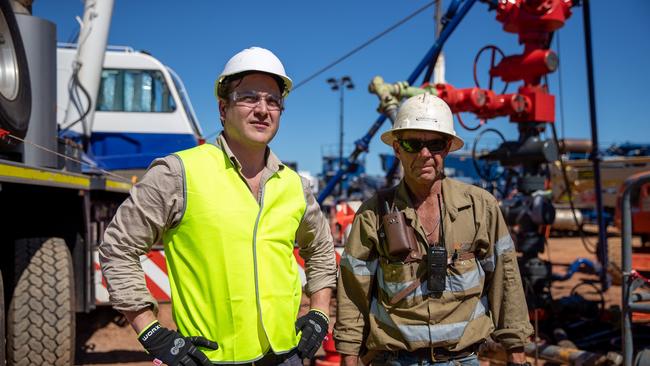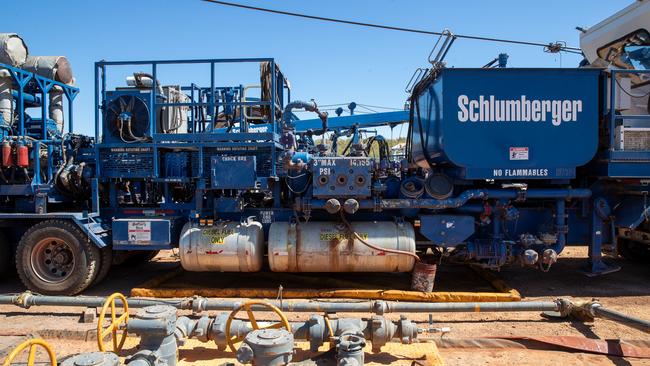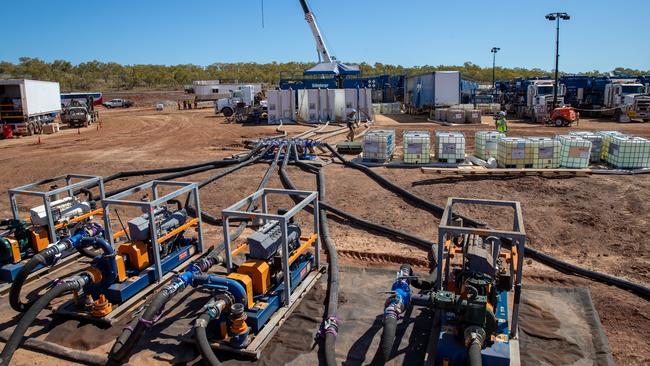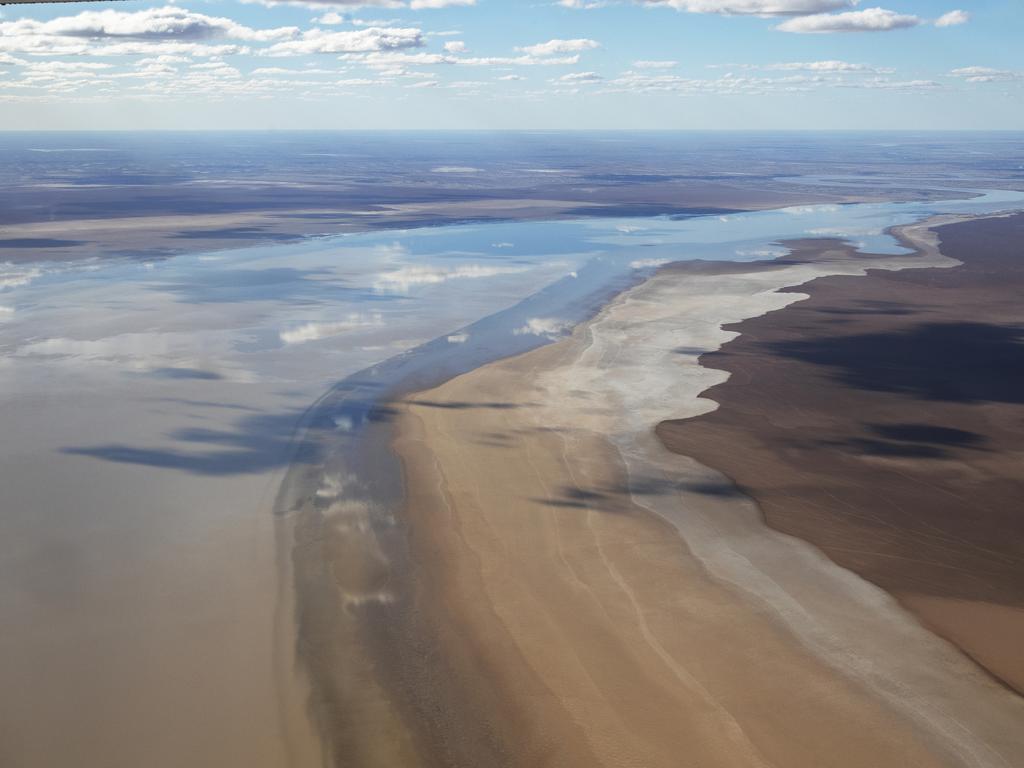ASX-listed Empire Energy’s Beetaloo fracking taps into need for east coast gas relief
In a remote part of the Northern Territory, ASX-listed Empire Energy is pushing ahead with an idea to fix the east coast gas crisis by building a beach underground.
Way out in the Beetaloo Basin, a remote part of the Northern Territory, a bunch of blokes with an idea to fix the east coast gas crisis are building a beach underground.
Empire Energy, a $160m ASX-listed junior explorer, hopes to become the first company to bring onshore gas from the Top End’s vast shale reserves to market, in 2024-25.
The company is drilling a crucial test well known as Carpentaria-2H, to try to establish whether it can achieve gas flow rates which will be commercially viable.
“The gas resource under our feet is so enormous that there’s the potential to satisfy demand from the east coast and produce LNG,” says Empire’s boss, Alex Underwood.
“We should have a good indication by the end of this year of whether this project is economically viable.”

A government report in 2020 estimated the total amount of gas in the Beetaloo could be as much as 1000 times Australia’s entire annual domestic consumption, although only a portion of that would be recoverable.
Empire has an MOU with pipeline operator APA Group to support future sales of gas to interstate markets. It is also exploring opportunities with local customers and supports the NT government’s plan for a gas production, manufacturing and services hub.
Fracking, the process usually used to extract gas from shale, involves building a steel and concrete-lined well that goes down and then turns horizontal. World War II-inspired explosive charges are sent down the hole to perforate the casing, and fluids are pumped in afterwards, under extreme pressure, to fracture the rock.
A crucial step in the process involves using fluids to carry sand deep into the crack cavities.

When those fluids are “broken” with acids and flushed back out, the sand stays behind to prop the cavities open and allow the gas to escape.
Empire has 3200 tons of specially-selected sand — enough to build about 16 volleyball courts — that it plans to pump down the four-inch-diameter Carpentaria-2H well alone.
Fracking technology was developed in the American shale boom and has allowed the United States to produce some of the cheapest energy in the world.
Empire and other companies are trying to replicate those techniques here, where the conditions are somewhat different. For example, the most-developed US shale basins are a few hundred million years old, whereas the Beetaloo Basin is more than a billion years old.
Underwood thinks Empire’s gas could be especially competitive because it contains just 1–2 per cent CO2, compared to a Beetaloo average of 3 to 4 per cent and as much as 15 to 20 per cent elsewhere. He argues that will make offsetting the carbon cheaper.
At about 1600m, Empire’s wells are shallower than others in the Beetaloo and cost about 40 per cent less to drill, although there is a trade-off with flow rates as pressures at that depth are necessarily lower.

Green groups are concerned fracking the Beetaloo could contaminate its precious water resources. Empire’s technical staff say the nearest aquifer is at 200m depth, and they are monitoring it closely. Underwood is coy about how much surface space his project might eventually require — some pastoralists are anxious about the networks of wells, roads and pipes needed for full production — but insists it will be small.
“The work Empire is doing now is critical to estimating the scale of activity in our project area. But these numbers indicate the physical footprint on any likely development will be a very small portion of the total land area we would operate on,” he says.
Empire is unusual in that it operates on Aboriginal land. Most other Beetaloo projects are on pastoral leases, which are ultimately government-owned.
Underwood says Empire has invested $46.5m in the NT and plans to double that in the next six months. He says it has paid $3.4m in Territory taxes, about $1.6m in royalties to land councils and is employing local Aboriginal people and local businesses.
“The reality is it will take time to develop the region’s resources, and that’s why it’s so important we maintain momentum,” he says.
If onshore gas development really gets going in the Beetaloo, there will be a lot more underground beaches, so someone will need to buy a lot more sand, too.







To join the conversation, please log in. Don't have an account? Register
Join the conversation, you are commenting as Logout